Intel Core i9-13900K and i5-13600K Review: Raptor Lake Brings More Bite
by Gavin Bonshor on October 20, 2022 9:00 AM ESTCPU Benchmark Performance: Rendering And Encoding
Rendering tests, compared to others, are often a little more simple to digest and automate. All the tests put out some sort of score or time, usually in an obtainable way that makes it fairly easy to extract. These tests are some of the most strenuous in our list, due to the highly threaded nature of rendering and ray-tracing, and can draw a lot of power.
If a system is not properly configured to deal with the thermal requirements of the processor, the rendering benchmarks are where it would show most easily as the frequency drops over a sustained period of time. Most benchmarks in this case are re-run several times, and the key to this is having an appropriate idle/wait time between benchmarks to allow for temperatures to normalize from the last test.
One of the interesting elements of modern processors is encoding performance. This covers two main areas: encryption/decryption for secure data transfer, and video transcoding from one video format to another.
In the encrypt/decrypt scenario, how data is transferred and by what mechanism is pertinent to on-the-fly encryption of sensitive data - a process by which more modern devices are leaning to for software security.
We are using DDR5 memory on the Core i9-13900K, the Core i5-13600K, the Ryzen 9 7950X, and Ryzen 5 7600X, as well as Intel's 12th Gen (Alder Lake) processors at the following settings:
- DDR5-5600B CL46 - Intel 13th Gen
- DDR5-5200 CL44 - Ryzen 7000
- DDR5-4800 (B) CL40 - Intel 12th Gen
All other CPUs such as Ryzen 5000 and 3000 were tested at the relevant JEDEC settings as per the processor's individual memory support with DDR4.
Rendering
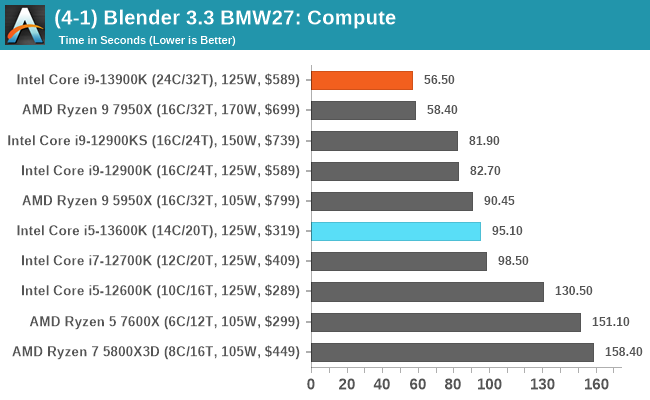
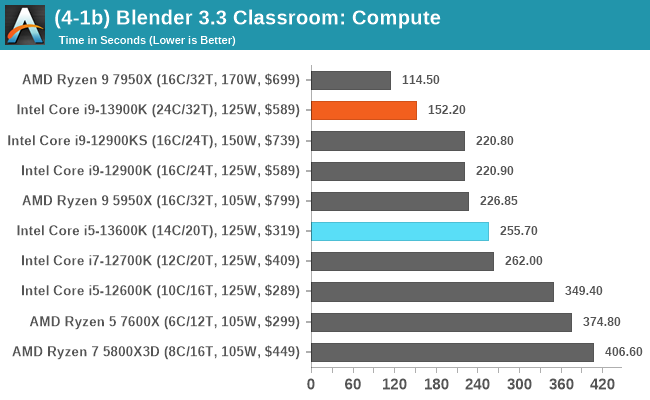
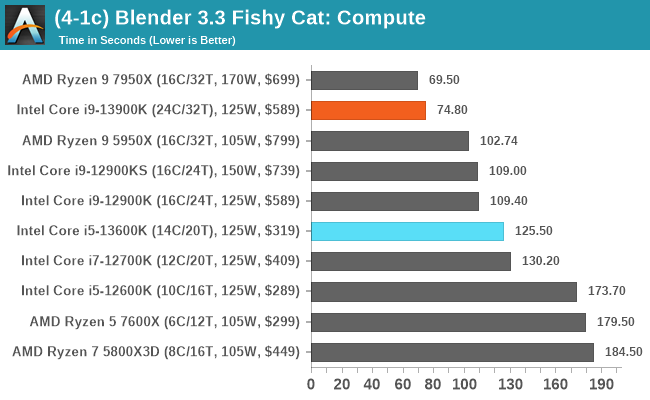
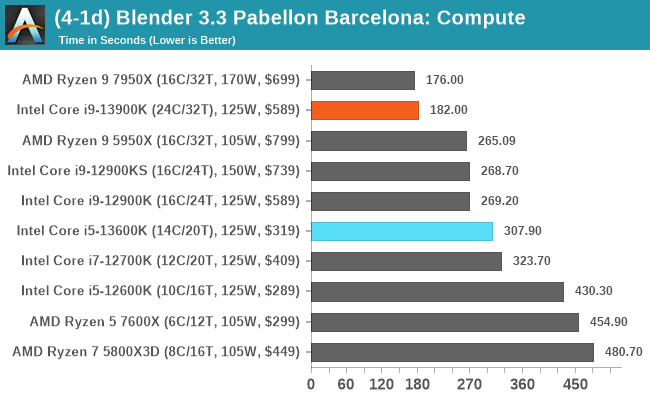
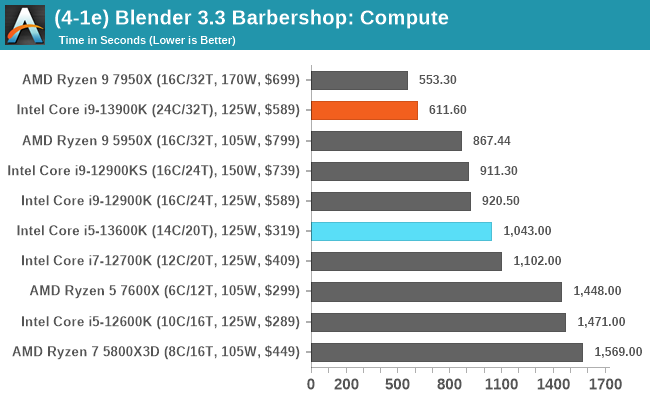
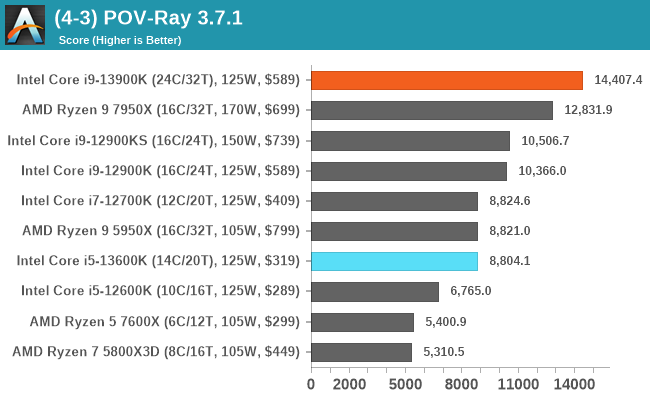
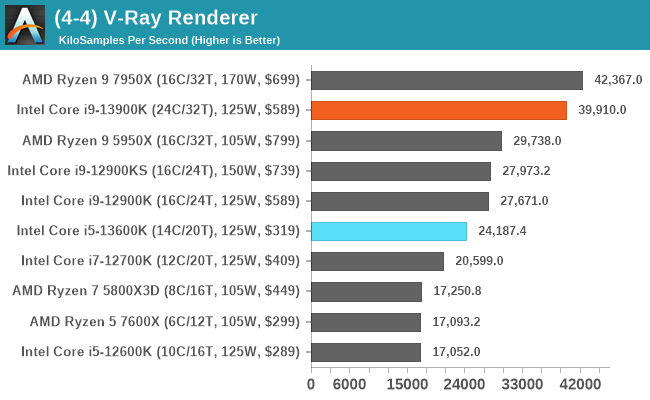
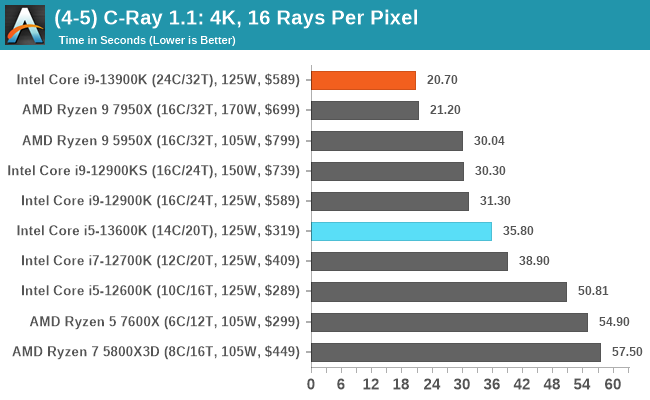
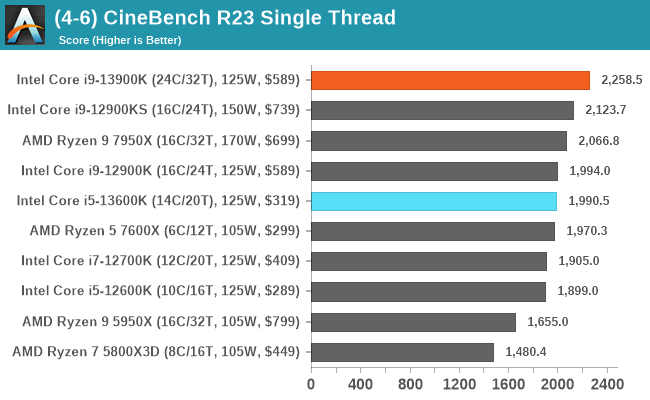

Identifying what core comes where in our rendering tests, both the Core i9-13900K and Ryzen 9 7950X sit comfortably at the top of the tree. Depending on the test, it’s a consistent battle for rendering supremacy. Where things aren’t as close are in our POV-Ray and V-Ray tests, where the Core i9-13900K has a distinct advantage; likely down to having eight more logical cores than the 7950X.
Encoding
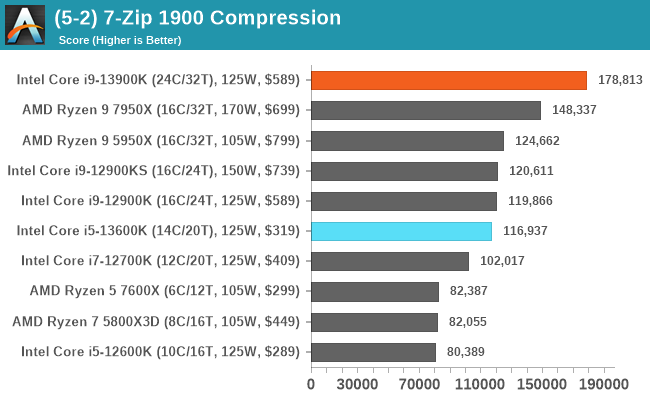
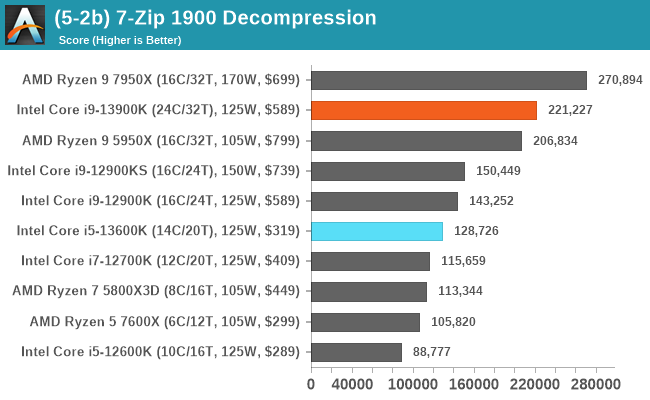
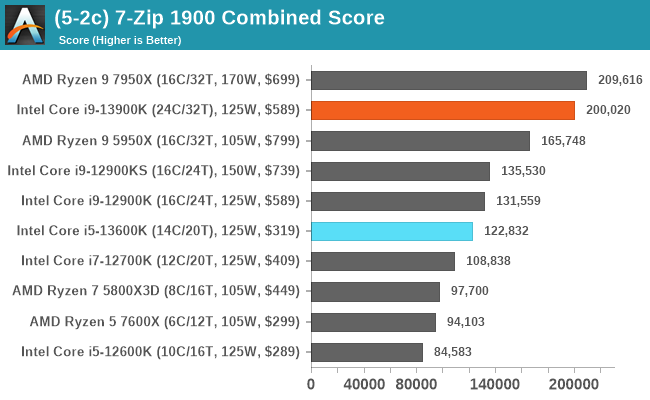
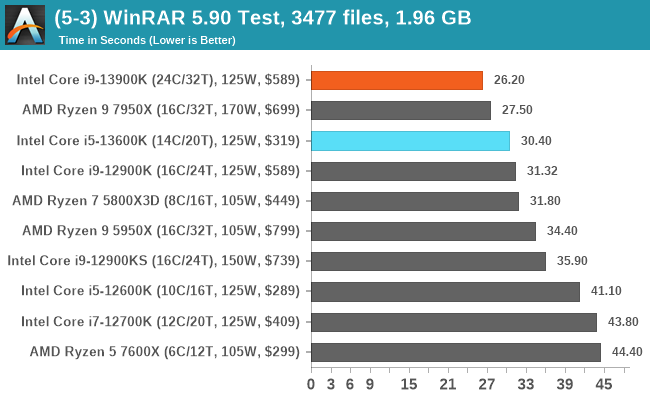

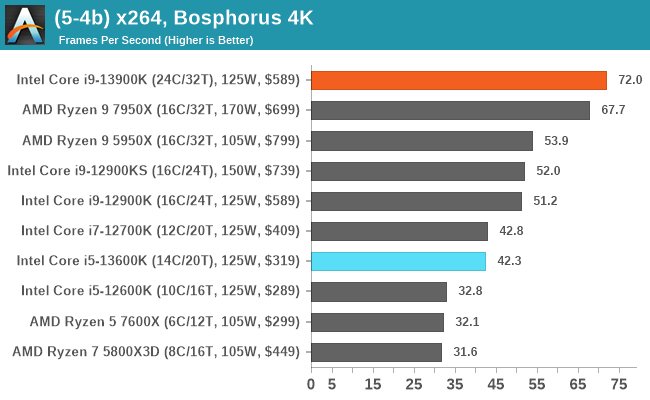
In our encoding tests, interestingly the Core i9-13900K looks to have the advantage in compressing files with 7-Zip. It’s a little different for AMD as the Ryzen 9 7950X decompresses the data better, with the overall combined advantage going to AMD in this particular test. In our updated x264 benchmark, Intel takes the lead in 4K encoding, while AMD has the lead in 1080p encoding; both are equally viable options, however.










169 Comments
View All Comments
OreoCookie - Tuesday, October 25, 2022 - link
Yes, TDP has a meaning, and technically, neither company is using it correctly. Back in the good-ol’ days when TDP was really max power under load, it easily allowed you to spec a cooler. Clock boosts were meant to be temporary, transient states so that *on average*, you’d still lie within the thermal budget of the cooler. Obviously, we are well past that.So yes, AMD is playing it a bit loose (+31 %). But Intel is playing it ridiculous: the i9’s max power (as tested here) is 2.7x (!) their “TDP”. Reply
shaolin95 - Thursday, October 20, 2022 - link
AMD does the same thing. dont be a fanboy Replyyh125d - Thursday, October 20, 2022 - link
If you're equating AMD going ~50w over TDP to intel going 210w over TDP, you're being the fanboy. ReplyYojimbo - Friday, October 21, 2022 - link
AMD's turbo clocking is more than 50W. ReplyYojimbo - Friday, October 21, 2022 - link
i checked and it's 60 W. That doesn't make AMD "less dishonest”. Neither company are being dishonest. It means AMD does not intend their desktop products to be used in lower power products. If you want to design a product around a Ryzen 7950X you need a 170 W cooling solution. Whereas you can put an i9 13900K in a product that can only dissipate 125 W. That's the difference between the two processors in terms if the TDPs. That's what TDP means. ReplyTruebilly - Friday, October 21, 2022 - link
I'd like to see someone run that 13900k with 120mm rad ReplyWrs - Friday, October 21, 2022 - link
I mean, it works. The processor automatically steps down the v/f curve and doesn't hiccup with a puny cooler good for 140'ish W. I tested a 12900k with a low-profile AXP-200 from my Skylake days. Performance wasn't bad, over 4GHz all 16 cores. I left all the OC settings on, or else stock E-cores would be 3.9GHz. Replynandnandnand - Thursday, October 20, 2022 - link
Go look at some efficiency curves for the 7950X and 13900K, for example at 19:00 in Hardware Unboxed's review: https://www.youtube.com/watch?v=P40gp_DJk5E ReplyYojimbo - Friday, October 21, 2022 - link
none of the companies "do” anything here. The "doing" is by the people who, though they are ignorant, write seething rants in comment sections damning the companies. Replybji - Friday, October 21, 2022 - link
This issue would be a lot less contentious if technical sites like Anandtech actually used their expertise to curate information presented. They just shouldn't even show TDP as it's simply not relevant to the end users who are reading the articles. They should have some standard benchmark they run to determine peak and maximum sustained power draws and show ONLY those values in any charts. Reply